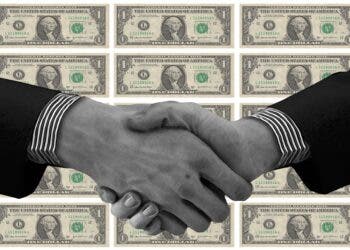
Quitting your boring day job to trade stocks and commodities might sound alluring and glamorous, but only a tiny fraction of ‘day traders’ actually make it. According to a recent study from Brazil, just 1.1% of retail traders — non-professional investors who buy or sell securities and commodities — had higher net returns than the Brazilian minimum wage over a year-long period. These are the lucky few who have actually turned a profit. The vast majority of day traders lose most of their money.
The pandemic has fueled a new generation of naive day traders
Day traders spend hours every day in front of their computers, watching charts and trying to make a profit from the tiny fluctuations in prices for the thousands of available commodities or financial instruments. Not only do they have to pick the right winners, but traders also need to do it at just the right timing over a short timeframe, making the challenge of turning a profit consistently even greater.
Millions of people who have been stuck at home have found the concept appealing and have flocked to online brokerage sites and apps such as E-Trade, Robinhood, and Charles Schwab. Robinhood, which is most popular among millennials, increased its user base by 40% in 2020. While these individual investors don’t carry as much influence in the market as institutions, their size has swelled over the past year, representing 19.5% of share trading.
Not all of these customers are day traders, but new day traders comprise a sizable chunk of the new customer base. Many of them have never traded before — and they might be in for a nasty surprise.
On average, day traders do horribly. One study that analyzed the performance of individual investors who engaged in day trading in Taiwan from 1992 to 2006 found that “the vast majority of day traders are unprofitable, and many persist despite an extensive experience of losses.”
In a recent study that documents the incredibly unprofitable nature of day trading, researchers analyzed the returns of 1,551 retail investors who were doing short-term trades in iBovespa (Brazilian stock market) contracts. The findings were quite discouraging: just 1.1% had higher net returns than the Brazilian minimum wage, and 0.5% earned more than the average Brazilian bank teller. Doesn’t sound so glamorous anymore.
According to the study’s authors from the Sao Paulo School of Economics and the University of Sao Paulo, “it is virtually impossible for individuals to day trade for a living.” While there are certainly some good days, these positive returns are squandered sooner than later as trading sessions accrue.
Although the poor performance of day trading has been no secret for years, many naive amateur investors are seduced by the prospects of making two- or three-digit returns over the course of days or even hours. With millions of Americans unemployed during the pandemic, many have seen day trading as a way to replace their lost income. What might sadly happen instead, is they will likely lose even more money.
“People are obviously attracted by the promise of big gains,” Barbara Roper, director of investor protection at the Consumer Federation of America, told CNBC. “But they are just as likely, maybe more likely, to suffer big losses.”
“It’s gambling,” she added. “Not investing. Losses are particularly likely in an economy that is as rife with unprecedented and unpredictable risks of the kind we face in a global pandemic that has decimated certain industries.”






